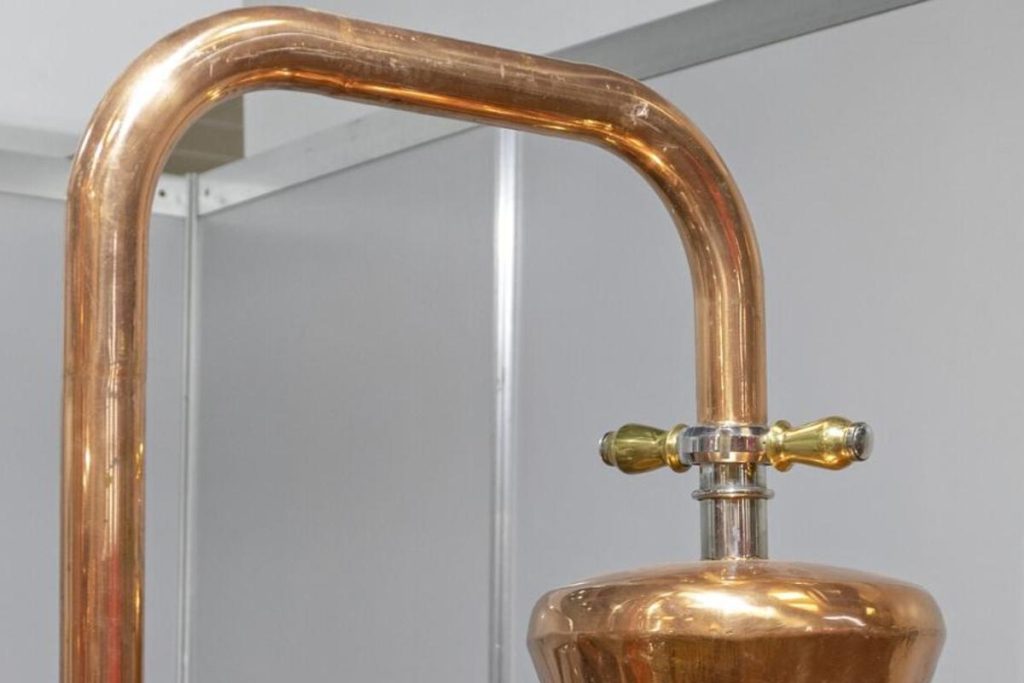Still Parts: What Is a Lyne Arm?

The simple answer is that a lyne arm is a pot still part that connects the still head to the product condenser. There are many different ways to configure this connection, and each option has a different effect on the final flavor of the spirit produced.
Lyne Arm vs. Lye Pipe
Before we dive into the way that the lyne arm affects the spirit’s characteristics, it’s fairly interesting to note that the history of the name is fairly uncertain. “Lyne arm” seems to be the more accepted name (at least here in the States), but like many other things, there are different names for this part. Sometimes the part is called a “lye pipe”, which seems to be the Scottish slang for a pipe laid between the kettle and condenser. The term Lyne Arm originates from Ireland but no one knows the actual origin of the term.
Lyne Arm Angles
Different lyne arm angles affect the reflux characteristics of the still. Reflux is the term for vapor that condenses on the inner surface of any still parts. A deflegmator is purposely built to actively control the reflux but many still parts contribute to the passive reflux. As a general rule, a lyne arm angle above 90 degrees allows less congeners and gives a lighter spirit by increasing the passive reflux and allowing any condensed material to flow back into the kettle. A lyne arm angle below 90 degrees gives a heavier flavor by allowing the material that condenses on the lyne arm to parr to the condenser. This allows more congeners to pass through. A straight lyne arm is considered a neutral position. This can allow for a more balanced spirit. The height of the head on a pot still also has a similar effect as an upward-angled lyne arm by increasing the passive reflux heading back to the kettle.
Lyne Arm Shapes
Those are the simplest options, but like everything else in the crafting of fine spirits, there is an almost endless amount of variations. Aside from the angle, adjusting the shape of the lyne arm or still head can also have an effect on the final product. A vertical “S” or “U” shape will help increase the passive reflux, and so will adding in an hourglass shape to the vapor path. Any increase of surface area will increase the opportunity for passive reflux to occur.
Part of the craft of distilling is experimenting and finding out what still parts configuration gives you the results you’re looking for. There is no one-size-fits-all solution, and all of the still parts have to work together to produce a quality product. Everyone’s “best” will be different, and trying different configurations will help you find what works best for you.
> Need help choosing still parts? Contact StillDragon today at 561-264-6490. We’re glad to help!